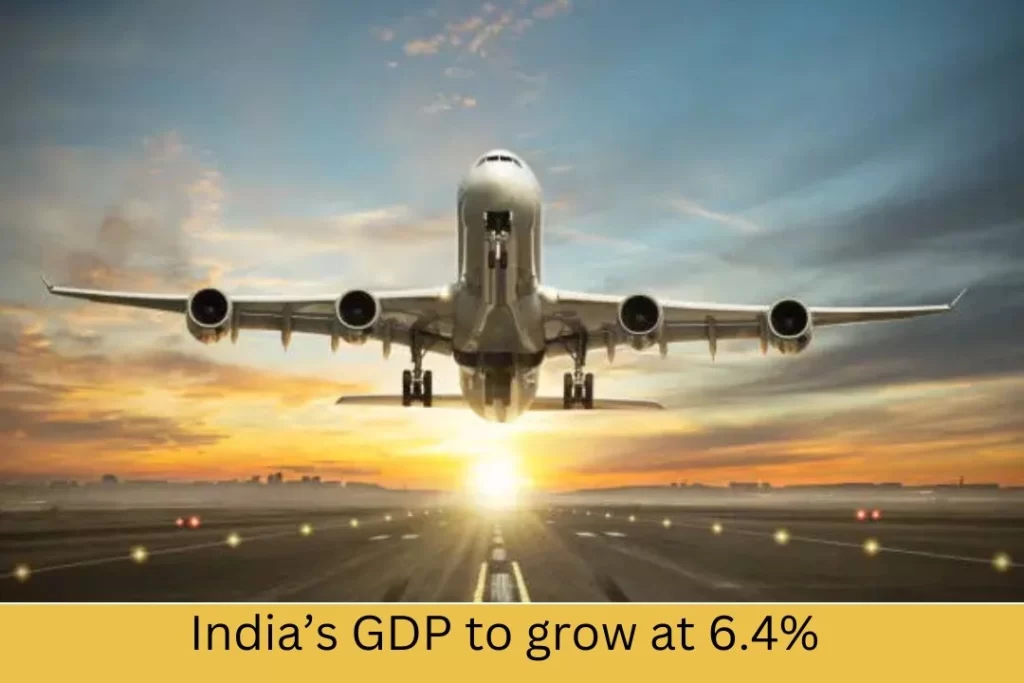India’s economy, characterized by its resilience and steady performance, continues to be a global standout. The First Advance Estimates (FAE) for 2024-25 indicate a real GDP growth rate of 6.4% and a nominal GDP growth of 9.7%. While these figures are marginally below the Reserve Bank of India’s revised projections, they reflect India’s robust economic framework and its ability to navigate global uncertainties effectively.
Several intrinsic factors underpin India’s growth trajectory, differentiating it from other economies:
- Demographic Dividend:
India boasts one of the youngest populations globally, with a median age of approximately 29 years. This vast workforce provides a steady supply of labor, fueling industries and driving consumption demand. In contrast, many developed countries face aging populations, leading to slower economic momentum. - Robust Domestic Demand:
A burgeoning middle class with increasing purchasing power is a cornerstone of India’s economy. This internal demand acts as a buffer against global economic downturns, unlike export-dependent economies that are more vulnerable to external shocks. - Service Sector Strength:
The IT and service sectors contribute significantly to India’s GDP, leveraging technological advancements and global outsourcing opportunities. India’s expertise in technology services is unmatched by many economies, making it a hub for innovation and digital transformation. - Policy-Driven Infrastructure Investments:
The Government of India’s focus on infrastructure, through initiatives like Gati Shakti and smart city projects, has spurred job creation and enhanced connectivity. Such public investments create a multiplier effect, stimulating private sector activity. - Agricultural Advancements:
India’s agriculture sector, supported by advancements in technology, irrigation, and government subsidies, contributes significantly to GDP. Unlike many nations that rely heavily on imports, India’s self-reliance in food production ensures economic stability. - Entrepreneurial Ecosystem:
India’s startup ecosystem, bolstered by government schemes such as “Startup India,” attracts global investments. This entrepreneurial dynamism fosters innovation and generates employment opportunities, further strengthening economic growth.
While many countries grapple with structural constraints, India’s growth is driven by unique enablers:
- Economic Diversification: India’s economy is well-diversified, encompassing agriculture, industry, and services. In comparison, economies overly reliant on a single sector, such as oil-exporting nations, face greater vulnerability to sector-specific shocks.
- Policy Reforms: Structural reforms, including GST, Insolvency and Bankruptcy Code (IBC), and ease of doing business initiatives, have streamlined India’s economic framework, fostering growth and investor confidence.
- Cost Advantage: India’s competitive labor costs attract manufacturing and outsourcing industries, giving it an edge over high-cost economies like the U.S. and Europe.
Economists C. Rangarajan and D.K. Srivastava highlighted that India’s 6.4% GDP growth in 2024-25 aligns with its potential growth rate of 6.5%. While lower than the exceptional 8.2% achieved in 2023-24, this year’s performance reflects the stabilizing nature of the economy.
The annual growth comprises 6% in the first half and 6.7% in the second, demonstrating recovery momentum. However, a key challenge has been the slowdown in government capital expenditure, which reached only 46.2% of its target by December 2024.
India’s Gross Fixed Capital Formation rate has stabilized at 33.4% over the past three years, a vital metric for sustained growth. Accelerated public investment is necessary to sustain this momentum and encourage private sector participation.
Tax revenue performance remains a bright spot, with Gross Tax Revenue (GTR) growth of 10.7% in the first eight months of 2024-25. This trend minimizes fiscal constraints, enabling the government to prioritize capital expenditures.
India aims to maintain a steady real GDP growth rate of 6.5% over the next five years, as projected by the International Monetary Fund. Accompanied by inflation of approximately 4%, this growth could result in nominal GDP growth rates of 10.5%-11%, positioning India as a developed economy within the next two and a half decades.
Achieving this vision requires a concerted effort to enhance productivity, investment in human capital, and ensure policy stability.
India’s GDP growth is a testament to its unique economic strengths, including a young workforce, strong domestic demand, and a thriving service sector. While challenges remain, the country’s ability to leverage its distinct advantages places it on a promising path toward sustained prosperity and global economic leadership.




